Kia EV3 aims for mass appeal with best-in-class range, pricing
Its cheapest compact EV drives 600km on single charge, but market success hinges on final pricing
By Moon Joon-hyunPublished : May 23, 2024 - 20:59
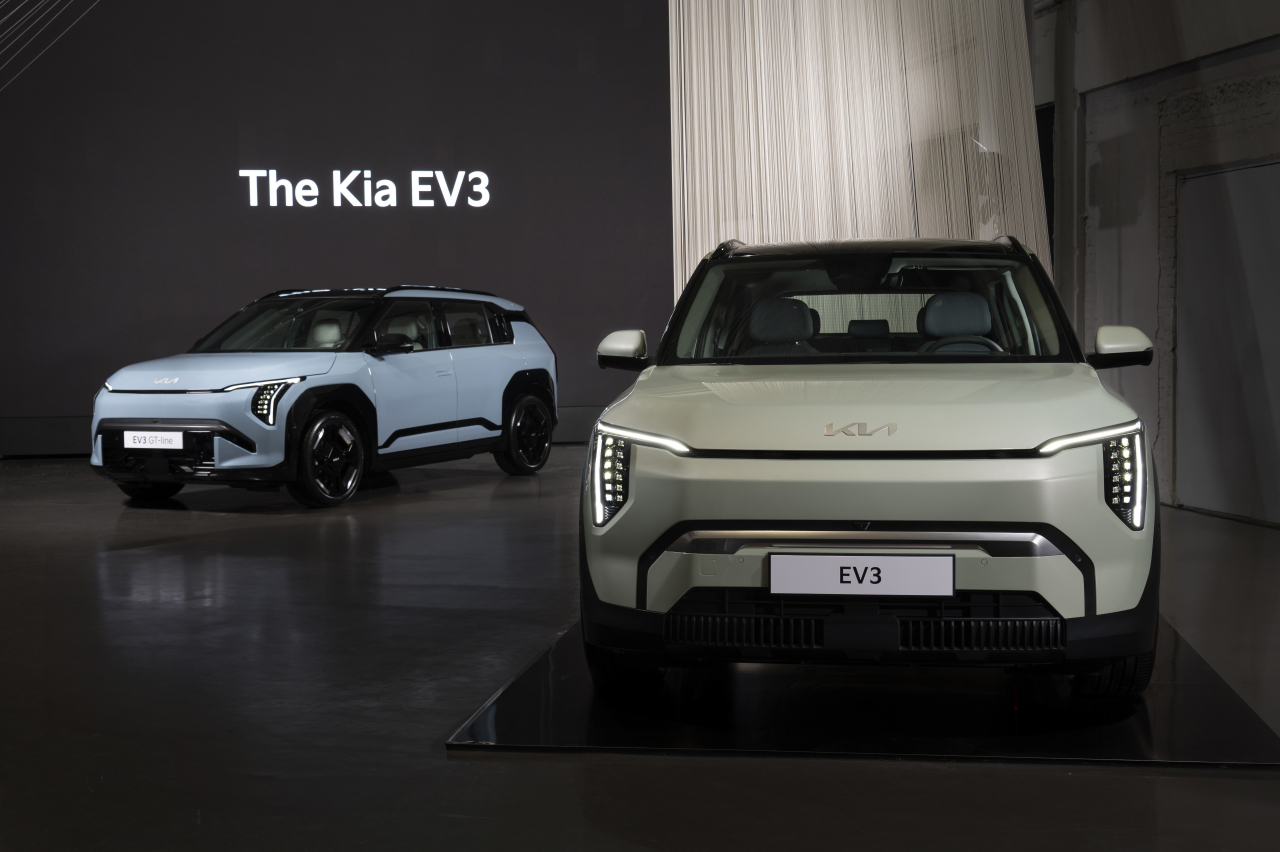
Kia unveiled its latest electric vehicle, the EV3, a subcompact electric sport utility vehicle designed to attract mainstream consumers and drive mass adoption of EVs, during an online media conference Thursday.
Made for nimble city driving, the EV3 serves as the entry-level model in Kia’s EV lineup that boasts a range of up to 600 km according to the Worldwide Harmonized Light Vehicle Test Procedure, or WLTP, marking it as best-in-class for its size. It is equipped with a front-wheel-drive motor delivering 150 kilowatts of power, translating to about 201 horsepower -- comparable to many mid-sized gasoline engines.
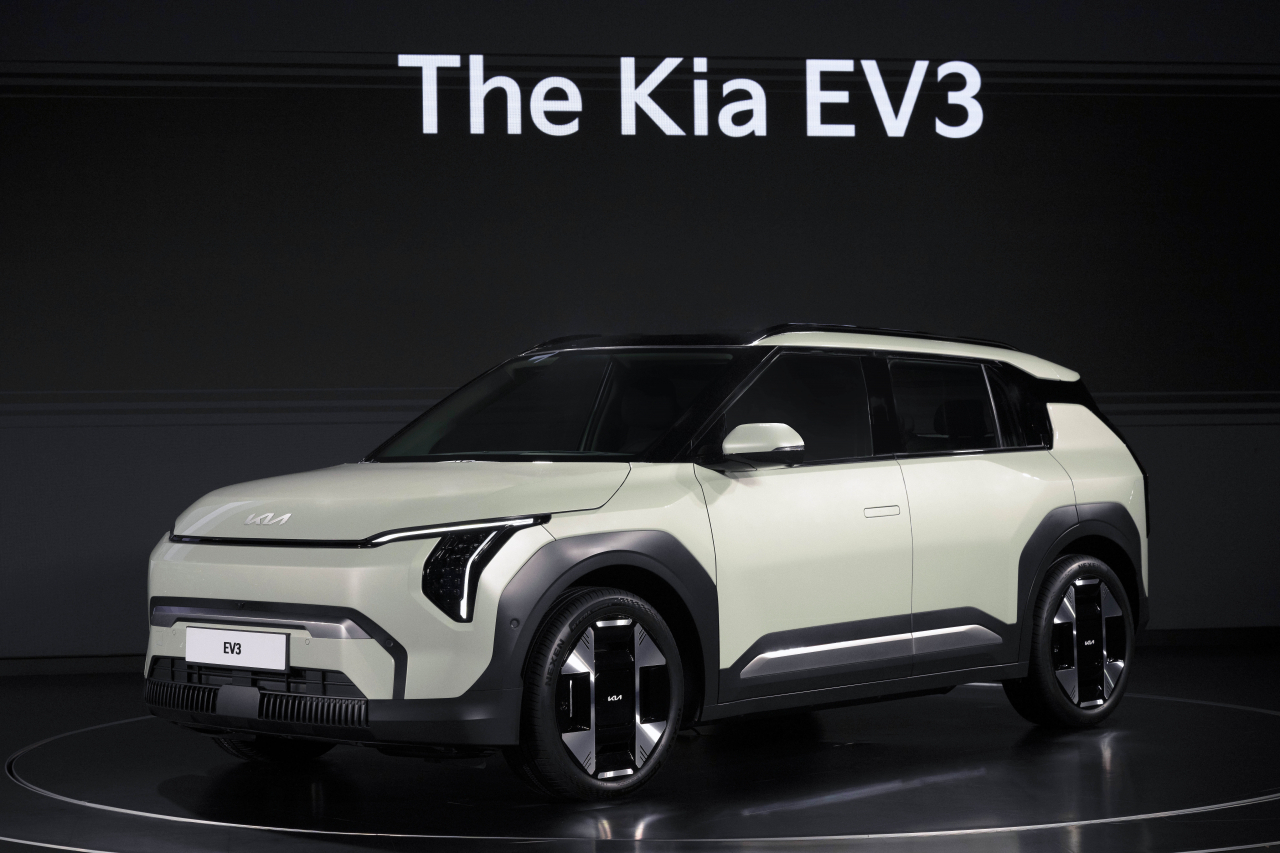
Following the success of the EV6 and EV9, the EV3 represents Kia's latest push to mainstream electric vehicles. The design language of the EV3 borrows elements from its siblings but presents them in a more condensed format, while the gently sloping roofline gives it a sporty, coupe-like silhouette. As the smallest model in Kia's EV lineup, it is similar in size to models like the Chevrolet Bolt EUV and Peugeot e-2008.
Pricing will be a key factor in the EV3’s market success. However, Kia has yet to finalize detailed pricing across different models and trims. The EV3 would need to compete with rivals like the BYD Atto 3, which starts at an average of 40,000 euros ($43,000) in Europe and offers a maximum range of 420-km range by WLTP standards.
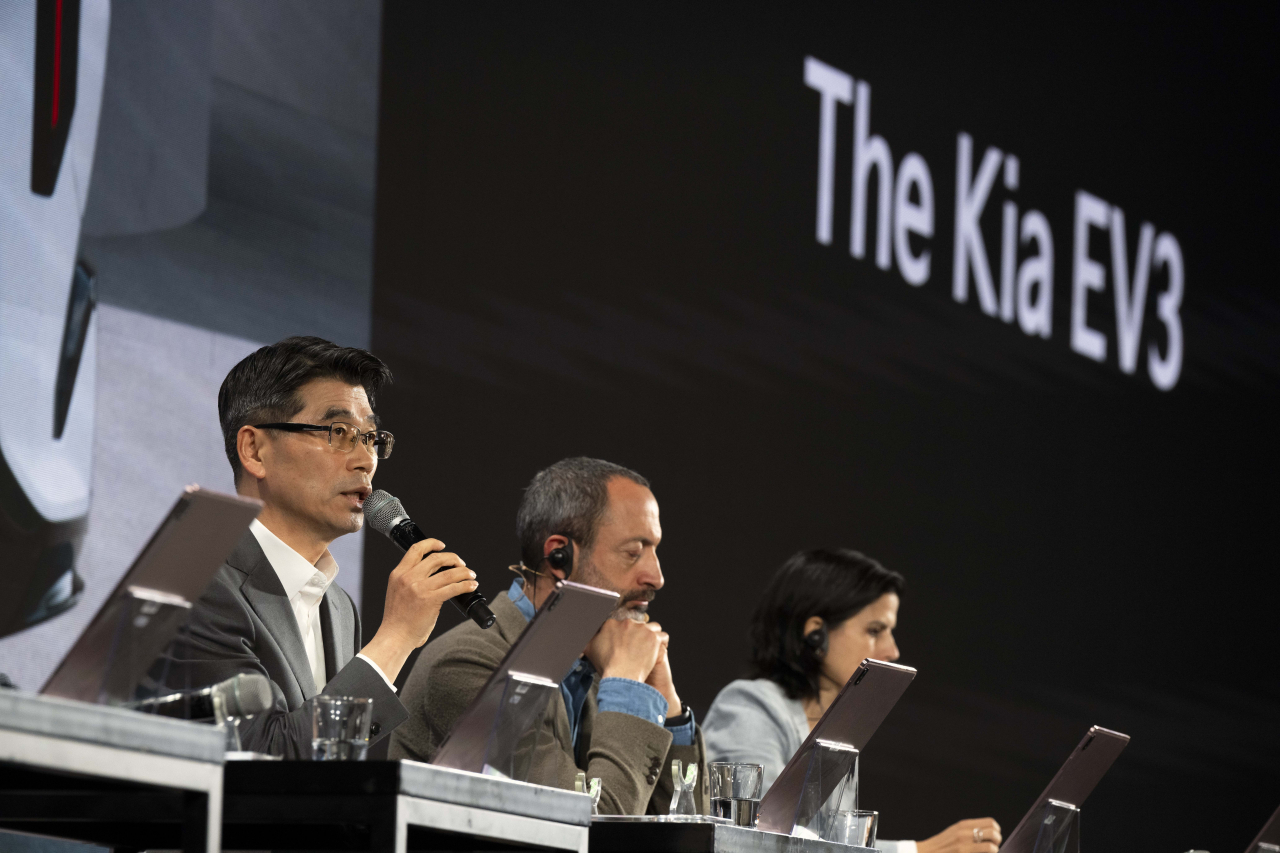
"We're aiming to price the EV3 between $35,000 and $50,000, depending on the specs and trim level, which we believe is ideal for attracting early majority consumers in the EV market,” said Kia CEO Song Ho-sung.
The EV3 will be available with two battery capacities: an 81.4 kilowatt-hour Long Range model and a 58.3 kWh Standard model. The Long Range variant boasts a certified range of 501 km per charge by the Korean Ministry of Trade, Industry, and Energy (MOTIE), reaching 600 km by WLTP standards. The Standard model offers a range of 350 km by MOTIE or 430 km by WLTP.
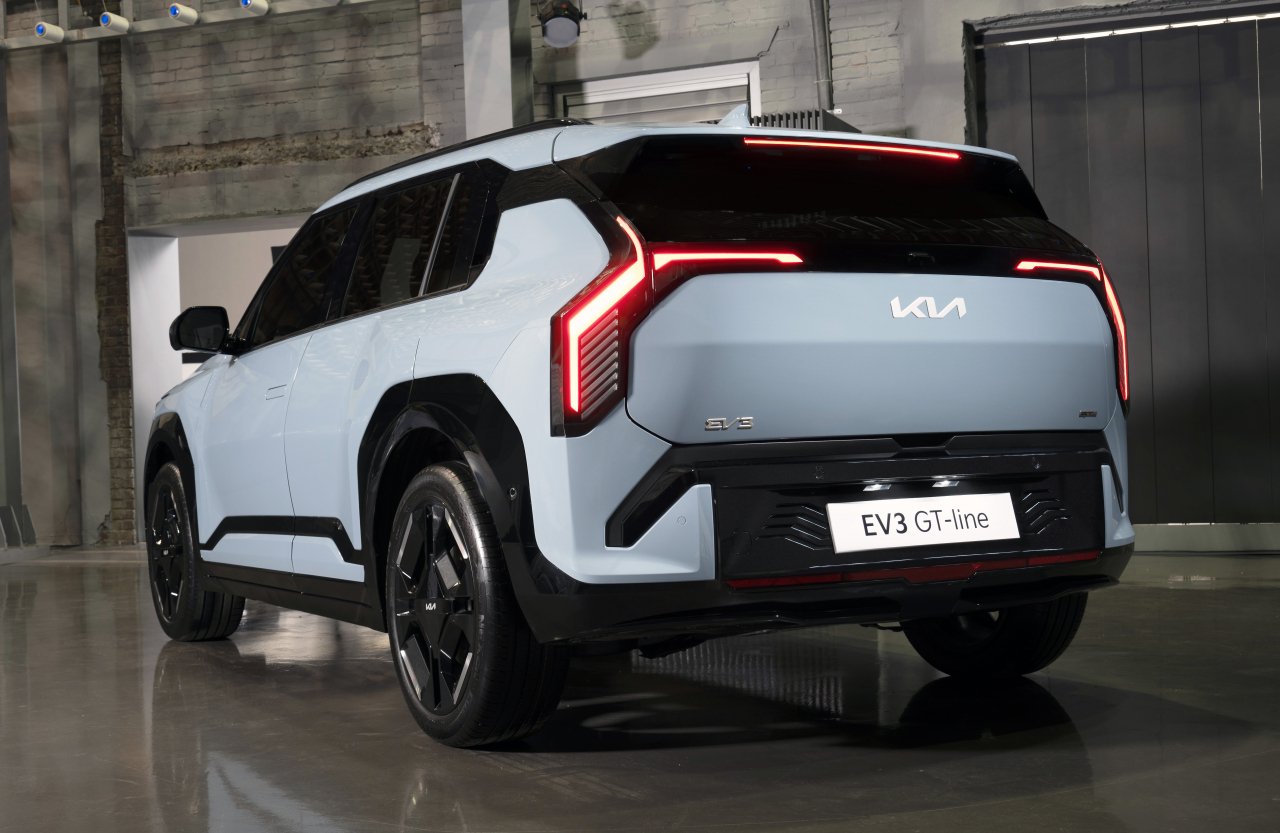
Unlike similar vehicles in its class, the EV3 features high-performance, higher-cost NCMA (nickel-cobalt-manganese-aluminum) lithium-ion battery cells developed through a joint venture between Hyundai Motor Group and LG Energy Solution, Korea’s top battery maker, enabling EV3’s top-tier energy density and range. Pricing the long-range model remains critical, as Kia emphasized that crossing the 500-km range is essential for mass adoption.
The EV3 can charge from 10 percent to 80 percent in 31 minutes using a 350-kW charger. This is slower than the EV6’s 18 minutes for the same charge as EV3 uses a cheaper 400V system instead of the 800V architecture found in the EV6, explained Seo Ha-joon, head of Kia’s domestic product planning.
With a height of 1,560 millimeters and a wheelbase of 2,680 mm, the EV3 provides a spacious interior without the bulk of larger SUVs. It offers 460 liters of trunk space, nearly matching the 490 liters of the larger EV6.
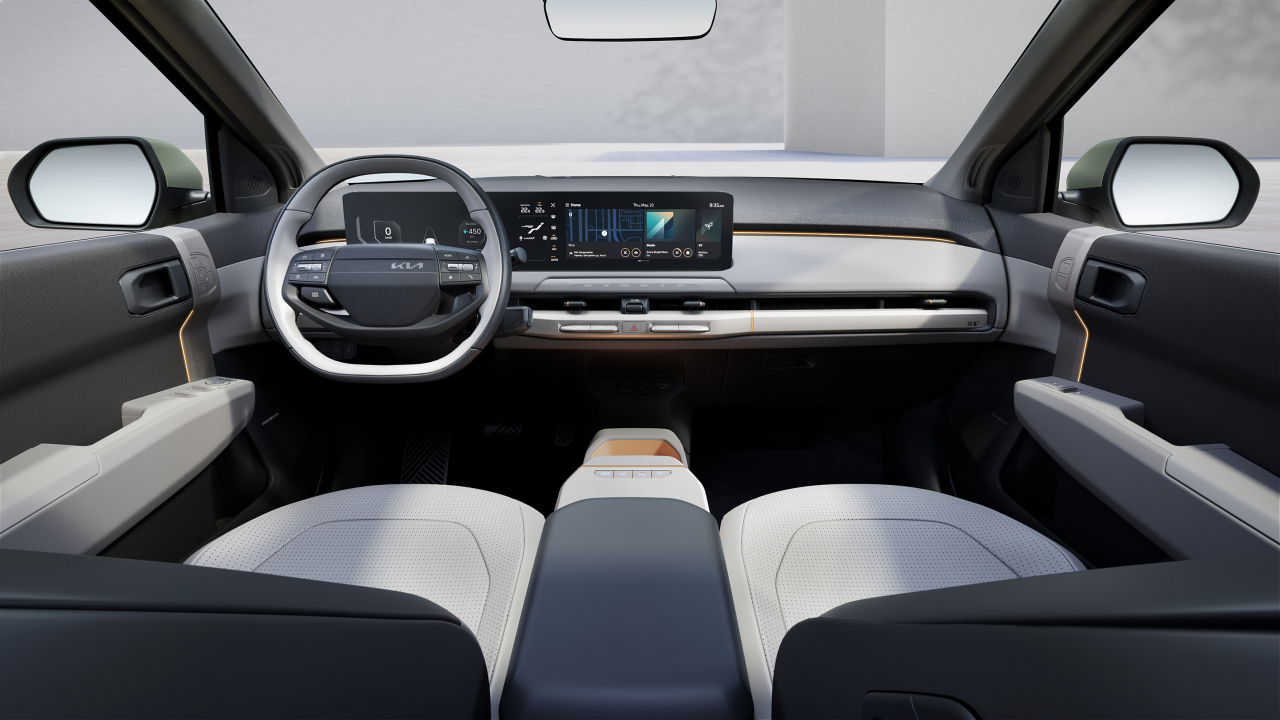
The EV3 also features cutting-edge convenience technology, most notably the Kia AI Assistant powered by the ChatGPT API, which activates with "Hey Kia" for intuitive vehicle control. It integrates with region-specific services like Soundhound in the US, Cerence in Europe and Kakao in Korea, enabling users to easily find local points of interest such as restaurants and cafes.
Kia's sales target for the EV3 is ambitious, aiming for global annual sales of 200,000 units, with expectations of 25,000 to 30,000 units in Korea alone. CEO Song Ho-sung noted that Kia’s recently launched city car Ray EV has achieved monthly sales of around 1,000 units, demonstrating a demand for affordable EVs.
Reservations for Korean customers will begin in early June 2024, with sales commencing in July 2024 following government certification. The EV3 will launch in Europe in the last quarter of this year, with a global rollout, including the US, slated for 2025.
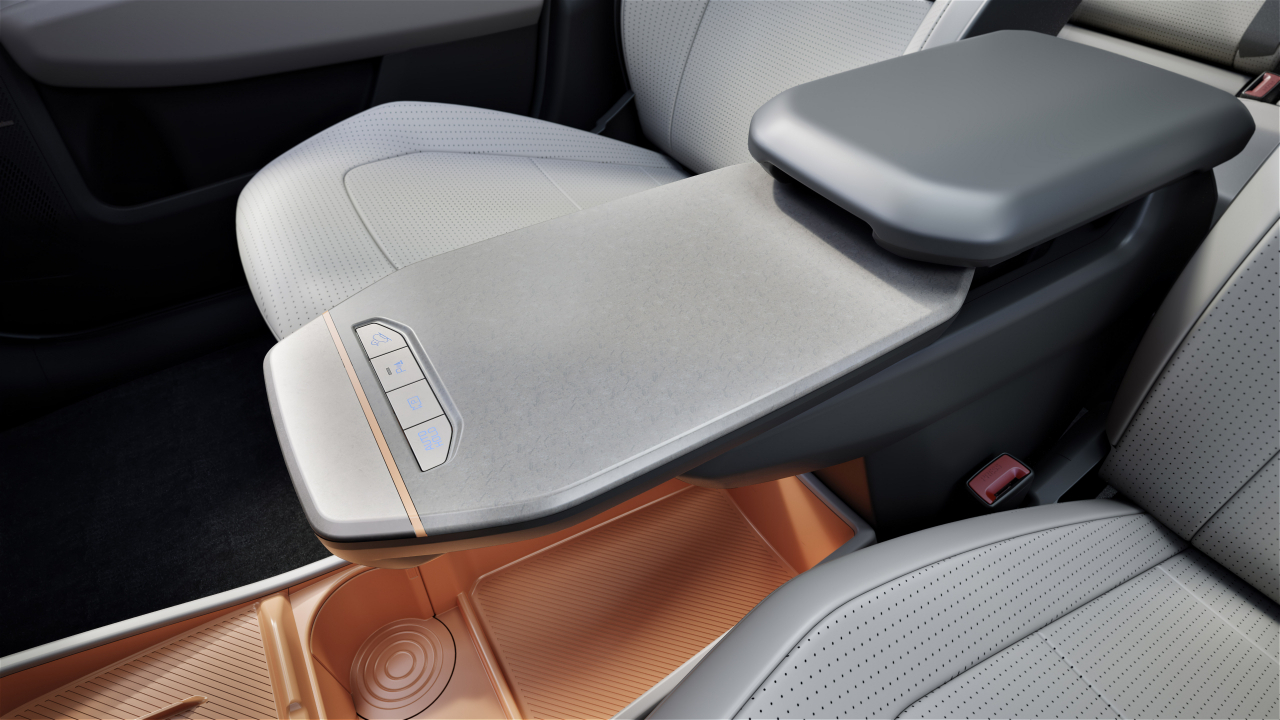
The EV3’s interior is designed for both style and functionality, featuring a spacious two-tone cabin with a panoramic widescreen display. A standout feature is the sliding console table in the front row, which extends forward by 120 millimeters, making it convenient for tasks like working or eating while parked.
The EV3’s front-wheel motor delivers 150 kW and 283 Nm of torque, ensuring robust performance for a subcompact SUV. Kia has engineered the EV3’s ride and handling to suit electric vehicle characteristics, focusing on swift acceleration and a low center of gravity for better stability.
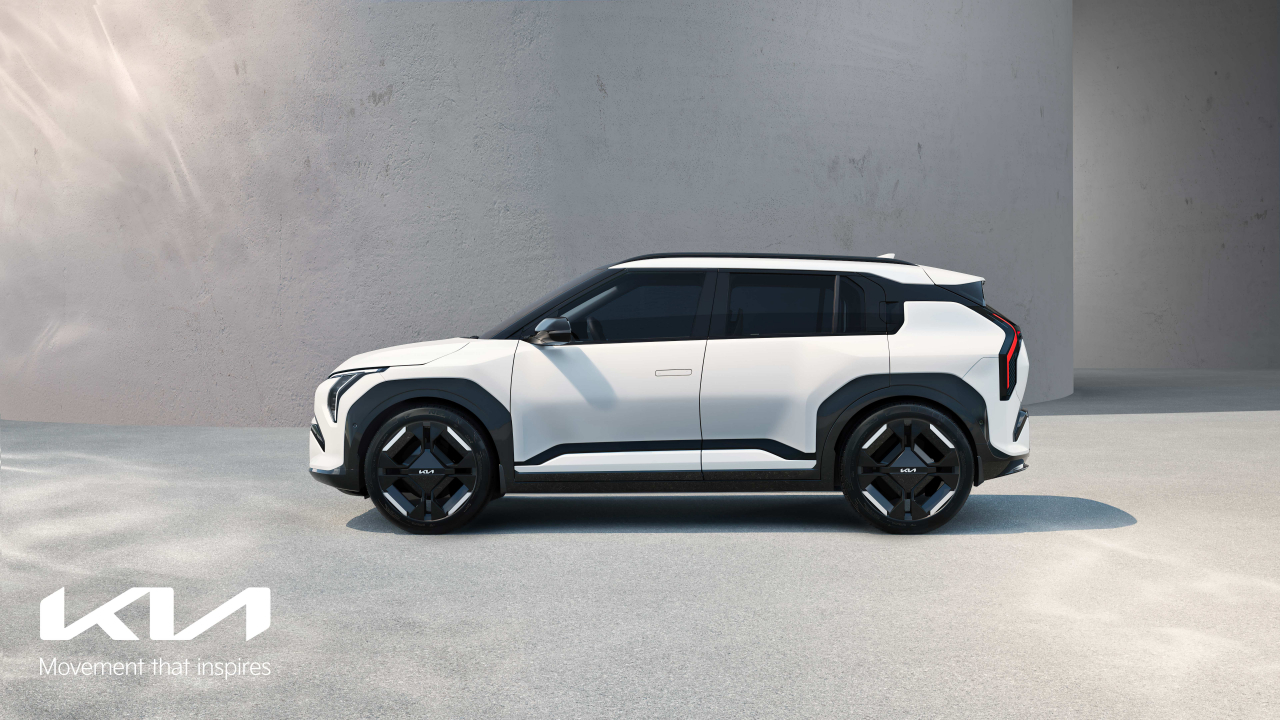
Like the EV6, the EV3 will offer a GT Line variant, which includes unique design elements for a sportier, more adventurous appearance compared to the base model. The exterior features a distinctive wing-shaped lower bumper that seamlessly integrates with the body, and a horizontal rear reflector spanning the bottom of the rear bumper.
For a smoother ride, the EV3 is equipped with frequency-sensitive shock absorbers that adjust based on speed and road conditions to minimize vibrations, which is especially important for a compact, highly vulnerable vehicle like the EV3. The front wheels also have hydro bushings that help absorb shocks and enhance comfort.
Sound-absorbing materials have also been used extensively throughout the cabin, including double-laminated acoustic glass for the windshield and front windows. This reduces noise, providing a quieter ride.
Kia's head of product planning Seo explained that Kia's engineers increased the stiffness of the cowl crossbar, the backbone of a car's front, to reduce steering vibrations, improving the vehicle’s responsiveness.
The EV3 also debuts the next generation of Hyundai Motor Group's regenerative braking system, i-Pedal 3.0, enabling drivers to accelerate, decelerate, and stop using only the accelerator pedal. This one-pedal driving feature simplifies driving and enhances comfort, especially in stop-and-go traffic.
The braking system includes an integrated electric booster with Normal and Sport modes, allowing drivers to customize their braking experience. Kia has optimized the vehicle control system to maximize regenerative braking. This not only improves energy efficiency but also reduces the load on the hydraulic brakes, minimizing heat buildup.











![[Online Predators] The 'helpers' preying on runaway teens](http://res.heraldm.com/phpwas/restmb_idxmake.php?idx=644&simg=/content/image/2024/06/24/20240624050609_0.jpg&u=20240624155737)








![[Today’s K-pop] NCT 127 to drop 6th LP on July 15](http://res.heraldm.com/phpwas/restmb_idxmake.php?idx=642&simg=/content/image/2024/06/24/20240624050694_0.jpg&u=)